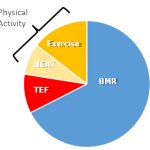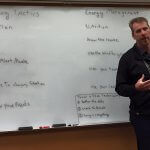The Dog Days of Summer and Interval Training
During the winter, we complain about boring hours spent riding indoors, going nowhere. As summer arrives, the trainer becomes a forgotten friend, a distant memory until that first outdoor interval workout. Despite the boredom, riding indoors provides controllability seldom available on an actual road. Riding indoors during the summer….well….is something we all want to avoid.
Read below for some tips on maximizing the probability of interval perfection while on the road and keeping that trainer on vacation.
Tip #1: Terrain
If you are doing a Zone 1 (Active Recovery) workout, picking a mountainous route is not ideal. The same rule applies for a harder workout, such as FTP coast downs (basically a 10 min Zone 4 workout in watching power is EXTREMELY important). For both, having a stretch of relatively flat road for solid 10-12 minute effort is necessary.
Tip #2: Consistent Pedal Velocity
A smooth power stroke at the same pedal speed provides a much smoother power output, which is easier said (or typed) than done. Use your recovery rides to practice your pedal stroke.
Tip #3: Garmin setup
I recommend three things.
- Set your Garmin to measure data in 3 second intervals
- Use your lap button when executing specific intervals that are less than one hour (FTP/LT). Trying to use the lap button on a 2 hour endurance ride will end with frustration, since it is using average power.
- Setup your screen for the workout that you are attempting to do. No need for HR if you are targeting power. You may not need the time of day, temperature, etc. Setup the Garmin for exactly what you are doing, the fewer the items on the screen the better. ALWAYS keep cadence data, because in power workouts, cadence is always important.
Tip #4: Get into the spirit
Know the spirit of the workout. If you are going out on a Zone 2 Endurance ride, I suggest that you setup the Garmin with speed, distance, time, cadence, and normalized power. At the end of the ride make sure your normalized power is in your zone 2 range. If it is, then you probably met the spirit of the workout. For the FTP coast downs I mentioned earlier, the workout consists of several 10 minute FTP efforts. Setup for AVERAGE power, you hit lap and over two minutes get your average power to your FTP (we will use 300 for easy math). Then you soft pedal allowing your average power to drop 10 watts (don’t pedal too softly because you want this drop to occur no faster than 20 seconds). Once your power is at 290, you are up out of the saddle with little less than a sprint raising the average power back to 300 watts. Once it says 300 watts, soft pedal to 290. Continue to do this until you have reached 10 minutes on the lap timer. Then rest. So over the 10 minutes you have averaged 300 watts, but you will see power in Zones 2,4,5, and 6 when you look at your trainingpeaks account (or whatever software you use).
One final thought. Execute the spirit of the workout and do not obsess over every pedal stroke or power number. Training workouts can have a steep learning curve. When you upload your files, be sure to provide a brief commentary – did you feel like executed the workout to standard? Did your RPE tell you 300W but your power meter noted only 190? All of this information, from the objective power data to the subjective commentary, enables your coach to best assess your progress.
Recent Posts


 g, and becoming fit.
g, and becoming fit.




